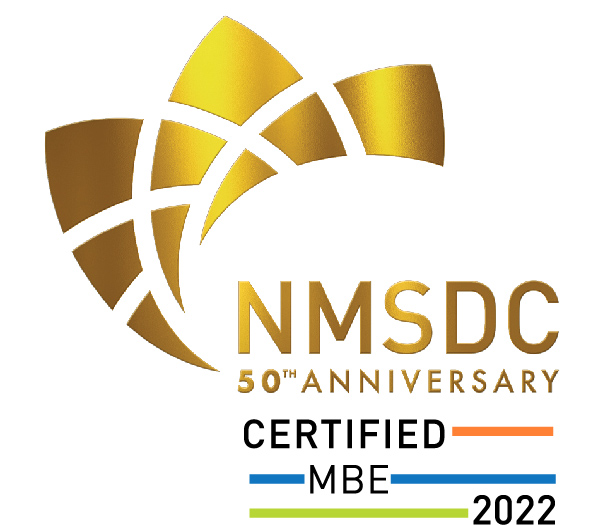This Sidley Update addresses the following recent developments and court decisions involving e-discovery issues:
1. An order from the U.S. District Court for the Northern District of California granting a motion to compel Defendant to produce hyperlinked documents as attachments to the emails in which they were linked
2. A ruling from the U.S. District Court for the District of North Dakota permitting Plaintiffs to bulk-designate their document production as confidential under the applicable protective order in lieu of a manual review to reduce the cost and burden of production
3. A decision from the U.S. District Court for the District of Vermont granting a motion to compel original metadata for documents where the metadata had been altered in the process of collection or production
4. An opinion from the U.S. District Court for the Eastern District of Tennessee finding that Defendant did not have an obligation to preserve certain documents based on Plaintiff’s call to an ethics and compliance hotline because the call did not raise the substance of the claims Plaintiff later filed against Defendant
* * * *
1. An order from the U.S. District Court for the Northern District of California granting a motion to compel Defendant to produce hyperlinked documents as attachments to the emails in which they were linked.
In In re Stubhub Refund Litigation, Case No. 20-md-02951-HSG (TSH), 2023 WL 3092972 (N.D. Cal. April 25, 2023), U.S. Magistrate Judge Thomas S. Hixson addressed a motion to compel Defendant to produce as attachments documents that were hyperlinked in emails but not produced with the emails as complete families.
In this brief order, Magistrate Judge Hixson first addressed the importance of protocols governing the production of electronically stored information (ESI), noting that “[w]ithout them, courts would have to rule on everything, and litigation would be even more expensive than it already is.” Id. at *1. He explained that courts encourage parties to work out agreements like ESI protocols and other procedures governing discovery because the parties “have some idea what they want to obtain in discovery, they know much better than the Court does what is possible or feasible, and they are best able to estimate the costs involved in whatever they agree to do.” Magistrate Judge Hixson stated that when parties reach an agreement, courts “need to hold them to it” or risk depriving the parties of any reason to enter into them.
In this case, the court had entered an agreed ESI protocol stating that “[e]mail repositories, also known as email databases (e.g., Outlook, .PST, Lotus, .NSF), can contain a variety of items, including messages, calendars, contacts, tasks, etc.” The ESI protocol went on to provide that “[f]or purposes of production, responsive items should include the ‘Email’ metadata/database fields … including but not limited to all parent items (mail, calendar, contacts, tasks, notes, etc.) and child files (attachments of files to email, hyperlinks to internal or nonpublic documents, or other items), with the parent/child relationship preserved.” The ESI protocol further provided that “emails with attachments, and email or other documents together with any documents referenced by document stubs or via links to internal document sources within those emails or other documents all constitute family groups.” Finally, the ESI protocol provided that “[h]yperlinked files must be produced as separate, attached documents.”
Magistrate Judge Hixson found that while Defendant agreed to treat hyperlinked documents as attachments, Defendant had failed to do so. Defendant claimed to have run search terms on its Google drive and to have produced responsive documents to Plaintiffs, but Defendant did not preserve the parent-child relationship as required by the ESI protocol. Id. at *2. Magistrate Judge Hixson explained that Defendant had produced some emails with a link in the email containing the word “google” or “sharepoint” or “tableau” in it, so that a search for those terms could find the link, but in other instances the email just says, “Click here,” leaving no way to search for all the missing links without reading through the documents. Id. at *1. Further, Defendant did not search other sources (such as Sharepoint or Tableau) in an effort to find the linked documents. As a result, Plaintiffs were left with emails and documents but no way to tell what document was linked to what email.
Defendant offered various explanations for why it was hard or impossible to locate the linked documents, including that the documents were moved to a different place or that email encryption methods had changed, rendering the links untraceable. Id. at *2. But Defendant ultimately acknowledged that it did not know the specific reason why it was unable to produce most of the linked document; it was just offering up possibilities. Defendant offered to meet and confer with Plaintiffs and to try to find the particular linked documents that Plaintiffs considered important.
Magistrate Judge Hixson reasoned that “[l]itigants should figure out what they are able to do before they enter into an agreement to do something” and should “live up to their agreements, especially when they are embodied in court orders, as the ESI Protocol is here.” He explained that if a party learns that a so-ordered discovery agreement has become impossible to comply with, “the party should promptly move for relief, with a good showing that despite its best efforts, compliance is impossible.” He noted that in this case, Defendant chose not to do either: Despite being in violation of the ESI protocol, Defendant “hasn’t done everything it could, it hasn’t moved for relief from the protocol, and it hasn’t settled on a clear story for why producing the linked documents can’t be done.”
Magistrate Judge Hixson distinguished a prior case, Nichols v. Noom, Inc., 2021 WL 948646 (S.D.N.Y. March 11, 2021), by noting that the defendant in that case had refused to treat linked documents as attachments. Here, in contrast, Defendant agreed to do that in the ESI protocol, and both sides agreed that with a handful of exceptions, Defendant had not lived up to that agreement (or moved to modify the ESI protocol).
Magistrate Judge Hixson concluded that the best option would be to hold Defendant to its agreement, which had been so ordered by the court. He therefore granted Plaintiffs’ motion to compel, ordering Defendant to produce its documents in conformity with the technical specifications in the ESI protocol. He further ordered that if Defendant failed to do so, it must produce for deposition a Rule 30(b)(6) witness with full knowledge of everything Defendant and its vendors did in attempting to produce linked documents as attachments as required by the ESI protocol.
Finally, Magistrate Judge Hixson noted that Plaintiffs could move for sanctions after the above steps had been taken and that his order was without prejudice to Defendant’s moving to modify the ESI protocol.
2. A ruling from the U.S. District Court for the District of North Dakota permitting Plaintiffs to bulk-designate their document production as confidential under the applicable protective order in lieu of a manual review to reduce the cost and burden of production.
In FA ND Chev, LLC v. Kupper, No. 20-cv-138, 2023 WL 1796925 (D.N.D. Jan. 4, 2023), U.S. Magistrate Judge Clare R. Hochhalter addressed a motion for a protective order permitting Plaintiffs to produce documents in bulk with a confidentiality designation to avoid a manual review and expense.
Plaintiffs purchased several automobile dealerships from Defendant, who agreed pursuant to the transaction to noncompetition and nonsolicitation clauses. 2023 WL 3225081 at *1. Plaintiffs alleged that Defendant “almost immediately” violated these agreements by attempting to poach employees of the recently sold dealerships. Magistrate Judge Hochhalter described the ensuing discovery as “complex and challenging for the parties to navigate amicably” and even “confusing.” 2023 WL 1796925 at *1, 4.
Pursuant to a court order for Plaintiffs to utilize specific search terms provided by Defendant, Plaintiffs initiated searches of their documents and discovered a high volume of “non-substantive ‘hits’” among the roughly 47,000 documents returned by the searches. Plaintiffs attempted to use technology-assisted review to eliminate the nonsubstantive hits but were unable to do so. Id. at *1, 4. Plaintiffs approached Defendant with this information and offered three potential solutions to complete discovery of the ESI: 1) Defendant could share the cost of the manual review of the files, 2) the search could be further narrowed according to parameters Plaintiffs proposed, or 3) Plaintiffs could produce all the documents designated “Highly Confidential — Attorneys’ Eyes Only” pursuant to the applicable protective order to “eliminate the need for a thorough review before production.” Id. at *1.
Defendant rejected each of these approaches, including technology-assisted review generally, and instead filed a motion for sanctions against Plaintiffs. Id. at *1, *4. In response to the motion, Plaintiffs moved for a protective order to prevent disclosure of the 47,000 documents, and proposed to the court the same three options it presented to Defendant. Id. at *3. Magistrate Judge Hochhalter denied Defendant’s motion for sanctions, noting that “Plaintiffs are making efforts to comply with the Court’s order and have not requested the Court to further rule on the issue.” Id. at *3.
Magistrate Judge Hochhalter then granted in part Plaintiffs’ motion for a protective order. Id. at *4. He was sympathetic to Plaintiffs’ concerns that manually reviewing the documents would result in additional expense, estimated by Plaintiffs to be as much as 885 hours and US$186,500, noting that he “understands Plaintiffs’ reluctance to spend additional funds and resources to complete the discovery process, as previously ordered by the Court.” Id. at *1, *4. Magistrate Judge Hochhalter stated that he understood Plaintiffs’ reluctance to spend any more on discovery of the ESI at issue because Plaintiffs wasted “funds and resources on a technology assisted review process that [Defendant] ultimately objected to.” Id. at *4.
Magistrate Judge Hochhalter then accepted a variation on one of Plaintiffs’ proposed solutions: He ordered Plaintiffs to produce all of the documents at issue but designated as “confidential” pursuant to the existing protective order in the case. He explained that this would “allow the Plaintiffs to disclose the information without added expense, protect the information for use only in this litigation, and allow [Defendant]’s counsel to share the information with him for purposes of his case.” Magistrate Judge Hochhalter found that Plaintiffs’ suggested “Highly Confidential — Attorneys’ Eyes Only” designation was “an extraordinary measure” that was not necessary “to protect any potentially sensitive information and prevent excessive costs.”
3. A decision from the U.S. District Court for the District of Vermont granting a motion to compel original metadata for documents where the metadata had been altered in the process of collection or production.
In Hoehl Family Foundation v. Roberts, No. 19-cv-229, 2023 WL 3271517 (D. Vt. Apr. 13, 2023), U.S. Chief District Judge Geoffrey Crawford addressed a motion to compel the production of metadata that had been partially scrubbed by movement of file locations in anticipation of litigation.
In December 2019, Plaintiff’s foundation (controlled by the Hoehl family) sued Defendants, investment manager individuals and entities servicing Plaintiff, concerning a US$1 million transaction that Plaintiff alleged was “a total loss” and triggered IRS provisions that resulted in a US$300,000 tax penalty. 2020 WL 10790035 at *1. In May 2021, another entity controlled by members of the Hoehl family filed suit in New Hampshire state court against some of the same Defendants for the same transaction. 2023 WL 3271517 at *1. Chief Judge Crawford noted that discovery in both cases “has been proceeding jointly.”
After Defendants produced over 40,000 documents to Plaintiff, Plaintiff sent Defendants a deficiency letter complaining of inaccurate or incomplete metadata, including that the dates provided in the produced documents appeared not to match the metadata. Id. at *4. Defendants explained some of these inaccuracies by noting that they “may reflect changes made to servers, file organization, etc.” made by one of the Defendants before the documents were collected by Defendants’ counsel. Defendants also explained that “original metadata had not been retained because Defendants moved documents from where they are stored in the ordinary course of business to intermediary folders in preparation for document production.”
Plaintiff suggested that Defendants cure the deficiency by providing screenshots of the Defendant’s D: drive, essentially “a ‘folder tree,’” so that Plaintiff could “identify which document came from which folder(s).” Defendants refused this proposal on confidentiality grounds. Instead, Defendants provided screenshots of a portion of the drive, which they asserted contained all the relevant sources for folders in the case. Id. at *5. Plaintiff objected that discovery showed the existence of other folders as the source of files in the case. Defendants later produced a file showing the file paths of every document, but the spreadsheet lacked other metadata, “such as author, date created, and date modified,” still omitted the folders the Plaintiff knew of from other sources, and showed that the identified documents’ metadata had been rewritten by being moved to an intermediary folder.
Plaintiff filed a motion to compel Defendants to cure their production of defective documents that Plaintiff claimed had been improperly produced without original metadata and in a manner other than the way the Defendants kept the documents in the usual course of business. Id. at *2. Chief Judge Crawford noted that the stipulated discovery order in the case provided that, unless otherwise specified, ESI would be provided in a text searchable format that preserved “the integrity of the underlying ESI, including original formatting, file structure (e.g., files attached to email), and metadata,” and that files should generally be provided in native format, with accompanying metadata. Id. at *2-3.
Defendants raised two arguments in opposition to the motion to compel. First, Defendants argued that Plaintiff had waived metadata-based deficiency objections by failing to timely raise them between the parties. Id. at *6. In particular, they argued that after the first time Plaintiff raised an objection based on metadata, Plaintiff then waited over a year to raise the issue a second time. Chief Judge Crawford rejected this argument, finding that Plaintiff had raised the metadata issue frequently and promptly. In particular, Chief Judge Crawford found that after the first objection Plaintiff had no basis “to conclude that those particular problems reflected any ongoing or larger issue with the metadata in Defendants’ productions.” Chief Judge Crawford also noted that although Plaintiff may not have objected in the interim year, the Plaintiff in the New Hampshire litigation did, and Defendants had conceded that discovery “proceeded jointly” with that case.
Second, Defendants argued that “requiring production of any more metadata … would be too expensive … and ‘totally unnecessary.’” Id. at *7. Chief Judge Crawford rejected that argument as well. He reasoned that “file-system metadata makes electronic documents more functional because it significantly improves a party’s ability to access, search, and sort large numbers of documents efficiently.” Id. (quotation omitted). Thus, he noted that Plaintiff sought the metadata in order “to understand the 400,000 plus pages of documents it has received.” Chief Judge Crawford also found that because the metadata issues related to only 10,000 documents out of the “400,000 plus” total pages produced, requiring production of the metadata would not be too expensive. He noted that the burden of the production of metadata was merely “a function of the way in which the Defendants chose to respond to the RFPs in the first place.”
Chief Judge Crawford thus found that “[b]y failing to produce documents with complete and accurate metadata, Defendants fell short of their discovery obligations” and directed Defendants “to supply complete and accurate metadata” for the metadata-deficient documents Plaintiff identified.
4. An opinion from the U.S. District Court for the Eastern District of Tennessee finding that Defendant did not have an obligation to preserve certain documents based on Plaintiff’s call to an ethics and compliance hotline because the call did not raise the substance of the claims Plaintiff later filed against Defendant.
In Goodale v. Elavon, Inc., No.: 19-CV-409-KAC-DCP, 2022 WL 17573909 (E.D. Tenn. Dec. 9, 2022), U.S. District Judge Katherine A. Crytzer addressed whether Defendant’s duty to preserve certain documents related to the Plaintiff’s employment was triggered by Plaintiff’s call to an ethics and compliance hotline after her termination.
Plaintiff, a former employee at Defendant credit card processor, sued Defendant for age discrimination after she was terminated. At the time of her termination, Plaintiff was a customer account manager, in which role she managed credit card processing for clients. Id. at *1. Defendant used the volume of outbound calls to clients as one metric to evaluate the performance of customer account managers and their “meaningful interaction with a customer” and monitored calling activity via a software application.
Plaintiff’s manager, Greg Hiers, and his manager, Chris Dover, monitored the calls placed by customer account managers. Id. at *3. On February 23, 2017, Dover discovered that at least one customer account manager had called an American Express automated phone number that did not involve interacting with a customer or other relevant individual. After investigating the call history of all customer account managers, Dover and Hiers determined that four customer account managers, including Plaintiff, dialed the American Express automated phone number on multiple occasions. Dover viewed this as “a violation of trust” and “a violation of U.S. Bank policy” because it allowed the customer account managers to manipulate one of the metrics on which their performance was based.
Dover and Hiers met with Plaintiff on February 27, 2017, and terminated her employment. Plaintiff testified that during this meeting, she explained that the calls to the American Express automated phone number were for an appropriate purpose. She also testified that she had provided Hiers with weekly reports of “daily and monthly activities” that documented the calls to the American Express automated phone number and why she called the number. Id. at *5.
On February 28, 2017, the day after her termination, Plaintiff called a U.S. Bank ethics and compliance hotline, stating that other employees were calling the number that she was terminated for calling and that she was being “singled out.” She further stated during the call that Dover “cursed at the team during a meeting” in a way that she “perceived as threatening about team member positions,” including “her day to day duties.” Plaintiff also stated during the call that she “would like her information regarding her unfair termination reviewed” and she “would like her job back.” She did not mention her age during the call to the hotline.
Plaintiff filed an initial charge of discrimination with the Equal Employment Opportunity Commission (EEOC) on August 30, 2017, then an amended charge on September 29, 2017, alleging that Defendant terminated her and took other unlawful actions because of her age and “in retaliation for making an internal complaint.” Id. at *6. The EEOC uploaded Plaintiff’s amended charge of discrimination to Defendant’s internal system on October 6, 2017, and it was viewed on October 10, 2017. After an investigation, the EEOC issued a right-to-sue letter on July 19, 2019, and Plaintiff filed this suit against Defendant on October 16, 2019.
After Defendant later filed a motion for summary judgment, Plaintiff filed a motion for spoliation sanctions regarding two items of “critical evidence” that Defendant purportedly destroyed: physical “weekly reports” and “transmittal and/or forwarding email(s)” of human resources “summaries” of the events leading up to Plaintiff’s termination. Although Plaintiff requested both items in discovery, Defendant claimed that it “conducted a diligent search and had not located any responsive documents.” Defendant asserted that the items never existed or were “destroyed pursuant to routine retention schedules before Defendant ever had notice of Plaintiff’s potential claims” and submitted a sworn affidavit of one of its attorneys identifying Defendant’s “limited retention of email records, general administrative information, and schedules” that was “ninety days past the creation of the document.”
Judge Crytzer first explained that spoliation, which is governed by federal law, “is the destruction or significant alteration of evidence, or the failure to preserve property for another’s use as evidence in pending or reasonably foreseeable litigation.” Id. at *7. If spoliation has occurred, the court retains discretion regarding (1) whether to impose sanctions and (2), if so, what sanctions to impose. She noted that Plaintiff, as the party seeking sanctions, bore the burden of demonstrating the propriety of sanctions.
Judge Crytzer further explained that a finding of spoliation requires that the allegedly offending party must have had an obligation to preserve the evidence at issue. This standard required Plaintiff to “establish (1) that the party having control over the evidence had an obligation to preserve it at the time it was destroyed; (2) that the records were destroyed ‘with a culpable state of mind’; and (3) that the destroyed evidence was ‘relevant’ to the party’s claim or defense such that a reasonable trier of fact could find that it would support that claim or defense.”
Judge Crytzer stated that a duty to preserve evidence arises where a party “has notice that the evidence is relevant to litigation or should have known that the evidence may be relevant to future litigation,” and that such triggering events “are typically limited to demand letters, preservation requests, threats of litigation, or a party’s decision to pursue a claim.”
Judge Crytzer concluded that Plaintiff did not demonstrate that Defendant had an obligation to preserve the documents at issue beyond its standard 90-day retention policy because Plaintiff’s February 28, 2017 call to U.S. Bank’s ethics and compliance hotline was not a “triggering event” that would have placed Defendant “on notice” to retain the weekly reports or summaries for potential future age discrimination litigation. She noted that the call report about her termination and Dover’s “demeaning and unprofessional tone” led to a broader ethics investigation that concluded on April 28, 2017, but the call report did not contain any mention of potential age discrimination or litigation. Nor did Plaintiff’s complaints during the call place Defendant on notice of potential age discrimination claims that would give rise to a document retention obligation, including the complaints about Dover’s conduct or that Plaintiff “would like her information regarding her unfair termination reviewed” and “she would like her job back.”
Moreover, Plaintiff filed her amended charge of discrimination with the EEOC on September 29, 2017, five months after the ethics investigation concluded and well beyond Defendant’s 90-day retention policy for “email records and general administrative information,” like the weekly reports or summaries at issue.
Judge Crytzer denied Plaintiff’s motion for spoliation sanctions, concluding that Plaintiff had failed to establish that Defendant had an obligation to preserve the two items of “critical evidence” at issue in her motion in light of Defendant’s standard retention policy. Id. at *8. However, because she also concluded that Plaintiff had not acted “in bad faith, vexatiously, wantonly, or for oppressive reasons,” she denied Defendant’s request for an order awarding its fees and costs in responding to Plaintiff’s motion.
Sidley Austin LLP provides this information as a service to clients and other friends for educational purposes only. It should not be construed or relied on as legal advice or to create a lawyer-client relationship. Readers should not act upon this information without seeking advice from professional advisers.







Leave A Comment